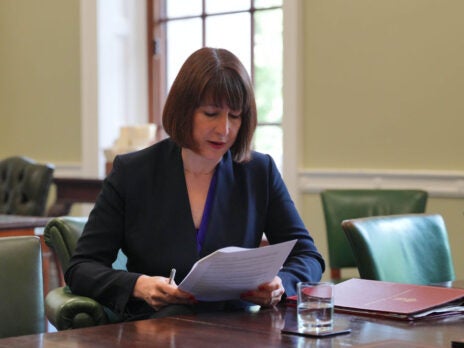
It’s the opening salvo for multi-party Britain, where the difference between first place and fourth place in Lincolnshire or Kent or Lancashire or Cornwall could be as little as a few dozen votes. Welcome to this year’s local elections.
Labour has two thirds of the seats in the House of Commons, on one third of the public vote. And it has been choppy since: Winter fuel payments in particular have troubled voters and given rise to apathy, indifference, and the radical right. These local elections, that look to be the most chaotic in years, are happening within that atmosphere.
Shire England is up for grabs on Thursday. The number of eligible voters here is 11.6 million. These locals aren’t nothing, but they are hardly representative of England writ large. And yet, they risk defining the direction of British politics in a way other elections don’t. A big Reform win would validate the right, and the response at both Labour and Tory conferences at the end of the summer could be dramatic.
These seats were last up in 2021. And since, there has been a series of boundary changes. This makes 2021/2025 comparisons difficult. Durham, for instance, has cut its number of council seats. In 2021 there were 126 Durham councillors. Now there are 98. Small Labour losses in the locale risk being exaggerated if we refer too closely to the old results.
The last time these seats were up was in 2021. And since then there have been a series of boundary changes making comparisons difficult. Durham, for instance, has cut its number of council seats. In 2021 there were 126 Durham councillors. Now there are 98. Small Labour losses in the locale risk being exaggerated if one only looks at the old results. As a consequence, we have had to provide notional estimates this year.
Which brings us to our forecast. The headline:
The Conservatives look set to lose more than half the seats they will be defending this year. The Britain Elects/New Statesman forecast suggests they will drop from 1,021 notional seats to 483. My model suggests none of the Tory run local authorities would stay Tory run (in majority terms) following May 1st.
This would represent one of their worst elections in Shire England for county councils. It would be the worst this century, second perhaps to the 1997 locals.
Now the dramatic drop in the Tory vote may, however small, help Labour in certain parts. Portions of Shire England are now represented by Labour MPs. Some of that parliamentary vote may be hanging around in enough numbers to help some new Labour councillors in divisions that haven’t seen a vote since Boris Johnson.
And, to a degree, it shows up in this forecast. Labour could make 72 net gains this year, winning 334 seats, up from 262 in 2021.
The Lib Dems, meanwhile, look to be on surer footing. They are on course to gain more than 100 council seats, jumping from 210 (notionally) in 2021 to 314. It would not be unreasonable to expect the Lib Dems to pip Labour for second place in the aggregate totals. But their rank is challenged by Reform, who our forecast says is on course to come from nowhere and pick up 311 councillors.
Reform is the enigma here. A deep dive into our forecast reveals Reform is in pole position in Durham, Lincolnshire, Nottinghamshire and Staffordshire. It’s in these parts where Reform will come not just with a handful of seats, not just hold the balance of power, but perhaps even govern as the senior party. Durham, for instance, is forecast to give Reform 38 seats, Labour 32, with Independents (and their complex groupings) sitting at 16. And you need 50 seats to govern Durham outright.
Returning to the national numbers, Independent candidates are not expected to lose big or win big this year. There are a number of pro-Gaza Independents running in parts of Lancashire will likely make a splash. But overall, Independents (well, other Independents) are competing with Reform for the same votes. The likelihood, as a consequence, is a small squeeze.
The Greens, to conclude, are expected to pick up a dozen plus additional seats. Steady, sustained progress from them.

